#mason knoll
Text
previous reblog made me look up my compilation of quotes/passages that struck me when I read The God of Small Things, which I’d previously posted only on dreamwidth. below the cut, for enjoyment and curiosity (cn for mentions of gore and sexual harassment):
The nights are clear, but suffused with sloth and sullen expectation.
But by early June the southwest monsoon breaks and there are three months of wind and water with short spells of sharp, glittering sunshine that thrilled children snatch to play with. The countryside turns an immodest green. Boundaries blur as tapioca fences take root and bloom. Brick walls turn moss green. Pepper vines snake up electric poles. Wild creepers burst through laterite banks and spill across flooded roads. Boats ply in the bazaars. And small fish appear in the puddles that fill the PWD potholes on the highways.
--
Yet Estha’s silence was never awkward. Never intrusive. Never noisy. It wasn’t an accusing, protesting silence as much as a sort of estivation, a dormancy, the psychological equivalent of what lungfish do to get themselves through the dry season.
Once the quietness arrived, it stayed and spread in Estha. It reached out of his head and enfolded him in its swampy arms. It rocked him to the rhythm of an ancient, fetal heartbeat. It sent its stealthy, suckered tentacles inching along the insides of his skull, hoovering the knolls and dells of his memory; dislodging old sentences, whisking them off the tip of his tongue.
---
Other days he walked down the road. Past the new, freshly baked, iced, Gulf-money houses built by nurses, masons, wire-benders and bank clerks, who worked hard and unhappily in faraway places. Past the resentful older houses [...] Each a tottering fiefdom with an epic of its own.
----
It is curious how sometimes the memory of death lives on for so much longer than the memory of the life that it purloined. Over the years, as the memory of Sophie Mol (the seeker of small wisdoms: Where do old birds go to die? Why don’t dead ones fall like stones from the sky? The harbinger of harsh reality: You’re both whole wogs and I’m a half one. The guru of gore: I’ve seen a man in an accident with his eyeball twinging on the end of a nerve, like a yo-yo) slowly faded, the Loss of Sophie Mol grew robust and alive. It was always there. Like a fruit in season.
---
She waged war on the weather. She tried to grow edelweiss and Chinese guava.
---
Perhaps it’s true that things can change in a day. That a few dozen hours can affect the outcome of whole lifetimes. And that when they do, those few dozen hours, like the salvaged remains of a burned house-the charred clock, the singed photograph, the scorched furniture- must be resurrected from the ruins and examined. Preserved. Accounted for.
---
His cremation was attended by all the boxers in Bengal. A congregation of mourners with lantern jaws and broken noses.
----
Ammu loved her children (of course), but their wide-eyed vulnerability and their willingness to love people who didn’t really love them exasperated her and sometimes made her want to hurt them-just as an education, a protection.
---
When she looked at herself in her wedding photographs, Ammu felt the woman that looked back at her was someone else. A foolish jeweled bride. Her silk sunset-colored sari shot with gold. Rings on every finger. White dots of sandalwood paste over her arched eyebrows. Looking at herself like this, Ammu’s soft mouth would twist into a small, bitter smile at the memory-not of the wedding itself so much as the fact that she had permitted herself to be so painstakingly decorated before being led to the gallows. It seemed so absurd. So futile.
other shorter lines I put in admittedly for much more superficial reasons like “hey! a pretty sentence!” (too short on time to put borders between different passages, sorry)
Pappachi’s Moth was held responsible for his black moods and sudden bouts of temper. Its pernicious ghost-gray, furry and with unusually dense dorsal tufts-haunted every house that he ever lived in. It tormented him and his children and his children’s children.
They were a family of Anglophiles. Pointed in the wrong direction, trapped outside their own history and unable to retrace their steps-because their footprints had been swept away.
When he was in this sort of mood, Chacko used his Reading Aloud voice. His room had a church-feeling. He didn’t care whether anyone was listening to him or not. And if they were, he didn’t care whether or not they had understood what he was saying. Ammu called them his Oxford Moods.
Ammu said it was all hogwash. Just a case of a spoiled princeling playing Comrade. Comrade! An Oxford avatar of the old zamindar mentality-a landlord forcing his attentions on women who depended on him for their livelihood.
Memory was that woman on the train. Insane in the way she sifted through dark things in a closet and emerged with the most unlikely ones-a fleeting look, a feeling. The smell of smoke. A windscreen wiper. A mother’s marble eyes. Quite sane in the way she left huge tracts of darkness veiled. Unremembered.
She had wanted a smooth performance. A prize for her children in the Indo-British Behavior Competition.
Shadows followed them. Silver jets in a blue church sky, like moths in a beam of light.
They were presents for a seven-year-old; Rahel was nearly eleven. It was as though Ammu believed that if she refused to acknowledge the passage of time, if she willed it to stand still in the lives of her twins, it would. As though sheer willpower was enough to suspend her children’s childhoods until she could afford to have them living with her.
Centuries telescoped into one evanescent moment. History was wrong-footed, caught off guard. Sloughed off like an old snakeskin. In its absence it left an aura, a palpable shimmering that was as plain to see as the water in a river or the sun in the sky. As plain to feel as the heat on a hot day, or the rug of a fish on a taut line. So obvious that no one noticed.
A pair of actors trapped in a recondite play with no hint of plot or narrative. Stumbling through their parts, nursing someone else’s sorrow. Grieving someone else’s grief.
[...] inside, map-breath’d ancestors with tough toe-nails whispered to the lizards on the wall. That History used the back verandah to negotiate its terms and collect its dues. […] on the day History picked to square its books, Estha would keep the receipt for the dues that Velutha paid.
The glint of Ammu’s needle. The color of a ribbon. The weave of the cross-stitch counterpane. A door slowly breaking. Isolated things that didn’t mean anything. As though the intelligence that decodes life’s hidden patterns-that connects reflections to images, glints to light, weaves to fabrics, needles to thread, walls to rooms, love to fear to anger to remorse-was suddenly lost.
He tells stories of the gods, but his yarn is spun from the ungodly, human heart. [...] Something to do with Death’s authority. Its terrible stillness.
They were both men whom childhood had abandoned without a trace. Men without curiosity. Without doubt. Both in their own way truly, terrifyingly adult. They looked out at the world and never wondered how it worked, because they knew. They worked it. They were mechanics who serviced different parts of the same machine.
#personally? i liked the shade thrown at the oxford graduate uncle and the rhodes scholarship#and the last bit about men who had been abandoned by childhood#but also everything else#the god of small things#books#arundhati roy#meikuree talks
15 notes
·
View notes
Text
just finished call of duty black ops. here are some (long, comma abusing, mostly tangentially related) thoughts after playing it for the first time for anyone who might read them!
altogether the campaign was fine, i guess.
as many others have in the past few years following the modern warfare remakes, my online activity has been inundated with thirst edits made of characters in call of duty — despite having never played the games myself. they’re not my thing.
my flatmate, however, has played them. he played them as a kid when they were being released, and he has had the misfortune of being on the receiving end of me watching these edits and reading fanfics (shout out early 351780!!). increasingly annoyed at my thirsting, he has forced me to play every call of duty campaign on the xbox 360.
i’ve found that i actually really enjoy playing cod. it’s enjoyable, action packed and, most importantly, quite compelling. they’re something i’d never have considered playing without him pushing me to play them. i’m more of an assassin’s creed/ace combat/nier girl and always have been. the closest i’d been to playing a shooter before this experience was playing gta, badly.
my flatmate knew my priorities. after an introduction to the premise with world at war — the first game in the black ops series, which i promise i will get to at some point — we played the original modern warfare campaigns first, because i am a wee bit in love with captain john price, and i loved them. the stories, while simple enough to follow (and already knowing about the main character deaths in advance — it’s a 10+ year old series, after all!), were emotionally evocative. i found myself becoming attached to the protagonists quickly and deeply, all the while having a whale of a time fucking around in the rest of the mission. this girl loves just walking onto grenades! between world at war and the modern warfare trilogy of campaigns, i was hooked from the start.
i realise now that i have been spoiled. those campaigns were just too good.
black ops’ campaign pales in comparison to the other four games i’ve played. i will admit that it is still fun — very fun! i enjoyed the feeling of progressing from one badass area to the next, with sam worthington’s horrific american accent and gary oldman’s alright russian accent pushing me through. i also have to admit that i still play like an absolute scrub, but the enjoyment i got from it outweighed the frustration. (mostly.)
black ops lacks the charm and depth i loved in world at war. while fun, every plot twist was spotted as soon as it was hinted to, much to my flatmate’s dismay. it took one guy telling mason to get a hold of himself for me to figure out the twist around reznov, and one recitation of the numbers on the way to the pentagon for me to figure out that mason would go on to kill kennedy. this, in particular, also felt like a bit of a cop-out — having this confirmed in a post-credits scene was disappointing, when i’d gone through the whole game and sat through an eminem song in the credits expecting a sequence where i’d be on the grassy knoll just to end up in a round of zombies. honk shoo.
modern warfare — modern warfare 2 in particular (kevin mckidd’s soap my beloved <3) — introduced new mechanics that’d be used once or twice in the whole game, most of which i enjoyed. the missions where you have to assist tf141 from an ac130 in the first game? stellar. absolutely unmatched. all ghillied up can go fuck itself on a gameplay front though, fuck you if you think i’m gonna figure out what the coriolis effect is. in black ops, the helicopter sequences felt like hate crimes against me personally. poorly designed flight controls and awful combat mechanics combined to make a literally unplayable pair of missions involving attacking other helicopters that i had to beg my flatmate to complete for me. embarrassing.
this game is utterly us army propaganda. the epic final shot in the campaign after killing dragovich — where suddenly 3 aircraft carriers are there waiting for you flying star spangled banners, and 8 fighter jets pass overhead — only resulted in making me cringe and laugh in disbelief, where in 2010 it would’ve made young men enlist. world at war at least has the balance of ‘war is cool and we’re the best’ in the pacific segments and ‘war sucks, actually,’ in the eastern front segments. modern warfare, too, falls face first into the latter, and that’s part of what i enjoyed about it.
even the little fun things weren’t as enjoyable. i didn’t have a favourite gun, or a favourite mission. the star cast choices were okay, but nothing to call home about. there wasn’t a ‘production babies’ segment in the credits, and they made me listen to eminem and pink. what the fuck?
altogether, black ops 1 has the worst campaign of the franchise i’ve played so far. next we’re onto black ops 2, which hopefully won’t come with a free personal statement like this one, and which i’ve been told is one of the best games ever made. we’ll see.
3/10
#sav talking to the void#cod posting#this is mostly me talking about how much i loved modern warfare btw#tldr 3/10#fun to play but shallow and boring to think about#viktor reznov my beloved#<- new babygirl alert
2 notes
·
View notes
Photo

Day 54: #superproud of the Minions at the first race of the season. Meila scored a top 15 and Mason (with his back hurting, particularly after the compression on the knoll) a top 10!! Hoping for both to improve today and have even more fun!!! #awesome-training ! #raceready !! #always-training !! #skierswillski #skirace #skiingwithkids #skii #skiing🎿 #skiing🎿 #skiingisfun #skiingislife #tahoe #laketahoe #truckee #mountain #mountains #mountainlife #skigirl #skigirls #kidsskiing #skiing⛷ #skiingisawesome #race #racer #racerkids #racereadyobstacles (at Palisades Tahoe) https://www.instagram.com/p/CoPdZHAr3w9/?igshid=NGJjMDIxMWI=
#superproud#awesome#raceready#always#skierswillski#skirace#skiingwithkids#skii#skiing🎿#skiingisfun#skiingislife#tahoe#laketahoe#truckee#mountain#mountains#mountainlife#skigirl#skigirls#kidsskiing#skiing⛷#skiingisawesome#race#racer#racerkids#racereadyobstacles
0 notes
Text
Lance Knoll-Greenville County, South Carolina
Lance Knoll-Greenville County, South Carolina
This 1853 Italianate farmhouse is built right on the county line between Spartanburg and Greenville. It is officially claimed by Greenville County. The home still contains all original details.
Notice the Masonic symbol below the roofline. That is an interesting detail to survive over the years.
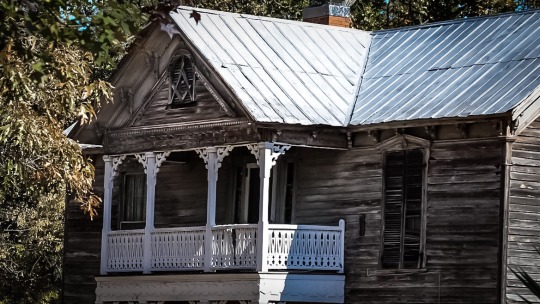
View On WordPress
0 notes
Text
Music Academy of Texas
If you're interested in taking up piano lessons, you've come to the right place. Katy Luo is a professional pianist from the San Francisco Bay Area, but she now lives in the city of Honolulu. In her piano lessons Katy can expect to learn the basics and more complex techniques to play an advanced piece.
Katy has performed a wide range of music from classical masters on period instruments to contemporary works by Bach, Stravinsky, and Dwarka. She has also performed in concerts with the Boys Choir of Harlem and the Bloomingdale School of Music.
Those who wish to learn the piano can take private lessons at the Music Academy of Texas in Katy. It's located off Mason Road just south of Highland Knolls. There, you'll find excellent professional piano instructors who will make your lessons enjoyable and enriching. The academy is also a member of the Music Teachers National Association, Texas Music Teachers Association, and Northwest Houston Music Teachers Association. If you want to learn how to play the piano, Katy is the perfect place to start.
Musiah is unlike any other type of traditional piano lesson. Unlike a traditional teacher, he's like your own piano teacher during every practice session. His approach prevents mis-learning, so you don't have to start over and practice the same techniques over again. Musiah imparts wisdom and knowledge about the learning process and the best way to practice. With Musiah, you can get started on the path to becoming a better musician today.
Musiah piano lessons incorporate memory training and other exercises into the learning process. These exercises help students learn to master challenging rhythms and develop their skills to read complex music. As a bonus, they can play the instrument more efficiently and confidently. Musiah also teaches students how to prepare for performances. It's easy to understand why Musiah piano lessons are so successful! You'll be well-prepared for these important performances.
Contact Us:
Music Academy of Texas
Address:25031 Westheimer Parkway, Katy TX 77494 US
Phone:(346) 646-5355
Email:[email protected]
1 note
·
View note
Photo









(( OOC: Meet Mason “Trigger” Knoll, he enjoys gambling for high stakes, licking things he shouldn’t, and long walks in the middle of the night in hopes of running into someone looking for a fight.
I have a bunch of videos for my lad on TikTok if you wanna follow his antics.
I love my delinquent son. ))
2K notes
·
View notes
Photo
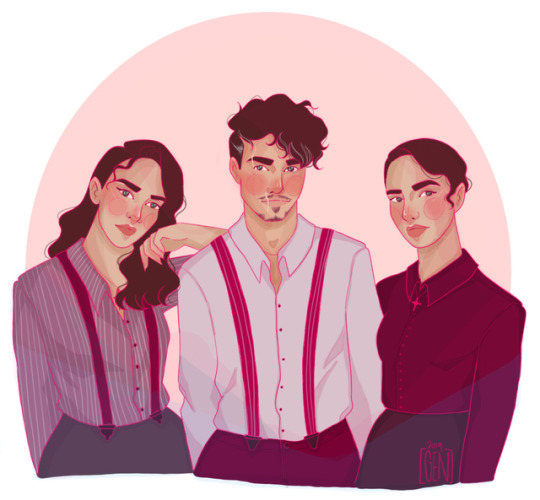
The Knoll Triplets
I'm obsessed with @asktheboywholived‘s Mafia OC’s but also screw you TT for being the reason I downloaded TikTok because now I'm addicted to the stupid thing
#knoll triplets#mason knoll#dora knoll#Deedee knoll#mafia au#mobster#mafia oc#asktheboywholived#TT#didgital drawing#character portrait#tiktok#finally clawing my way out of horrific artist block
956 notes
·
View notes
Photo

Better not get in trouble with the Knoll Triplets. For more check out @asktheboywholived!
*commissions reopen 1.11.19, shop in bio*
#knoll triplets#mason knoll#deedee knoll#dora knoll#digital art#mobster#mobster oc#Illustration#art of the day#tiktok
689 notes
·
View notes
Text

i just had to draw @asktheboywholived 's oc, mason, and it was surprisingly therapeutic
(open pic for better quality)
#sketchbook#inktober#sketch#character art#artist#my art#art#roleplay#mob rp#mobster#mafia rp#fanart#asktheboywholived#ttbret#mason knoll#makeup#amaarts
504 notes
·
View notes
Text

TTbret as
Mason „Trigger“ Knoll
#ttbret#mason knoll#mason trigger knoll#mafiaoc#mobster#tiktok#art#pencildrawing#this character is one of my fav#because of reasons#she is so damn talented
61 notes
·
View notes
Text


Brb crying.
please.
Don’t kill Mason.
@asktheboywholived
38 notes
·
View notes
Photo

Today I uploaded a CAS of @asktheboywholived‘s Mafia OC. You can check it out on my YouTube channel!!
https://www.youtube.com/watch?v=vWqV6KKKVew
3 notes
·
View notes
Text

I drew @asktheboywholived as Mason from Tiktok!
4 notes
·
View notes
Photo
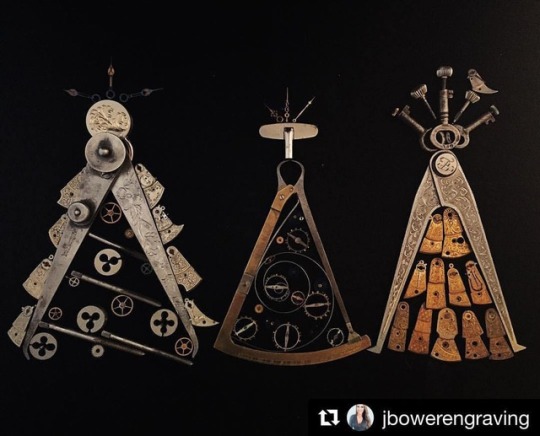
Nice!!! ・・・ It’s that time of year again, the time of year when I get out tweezers and make a Christmas picture from tools and watch parts. Note to self: Next year, do not open the box of watch gears ⚙️ upside down 🤦🏻♀️ . #Repost @jbowerengraving 🎄 . . #flatlay #gears #steampunk #tools #vintagechristmas #christmastree #knolling #vintagestyle #flatlaystyle #horology #watchparts #fossilbluff #freemason #masonic (at Fossil Bluff) https://www.instagram.com/p/Brp1iDeAzuC/?utm_source=ig_tumblr_share&igshid=gft957aa6jwm
#repost#flatlay#gears#steampunk#tools#vintagechristmas#christmastree#knolling#vintagestyle#flatlaystyle#horology#watchparts#fossilbluff#freemason#masonic
1 note
·
View note
Note
So... how many people have died? Or at least, how many people have died that you know of?

Naransky: Well, uh.... There was James, 'nd Vaughn.... Cassaro.... Knoll, Martinez, Mason......... Graves......
Naransky: I'd guess about, uh, forty or so guards just from our dorms in the uh, last year..... Not sure about scientists and whatnot...
27 notes
·
View notes
Photo
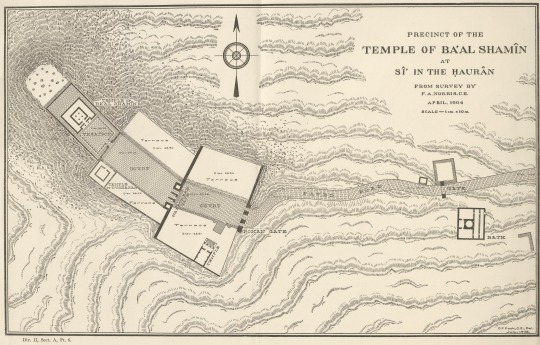




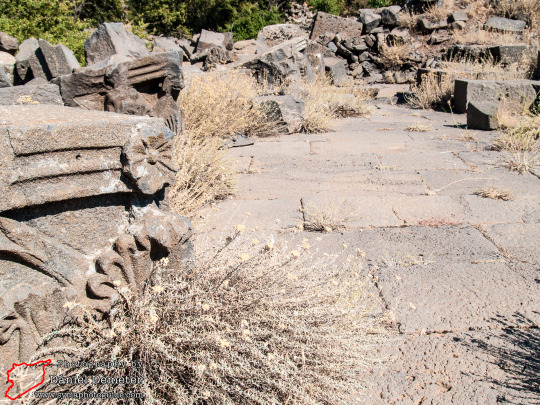
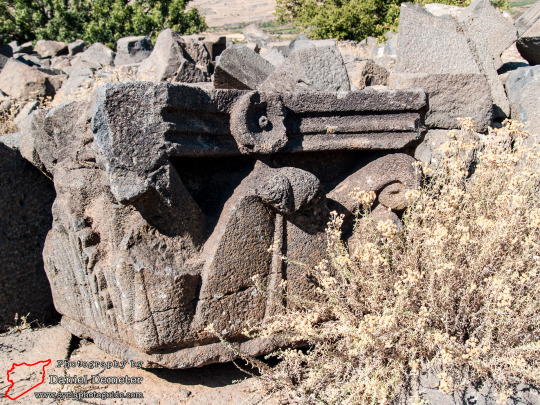
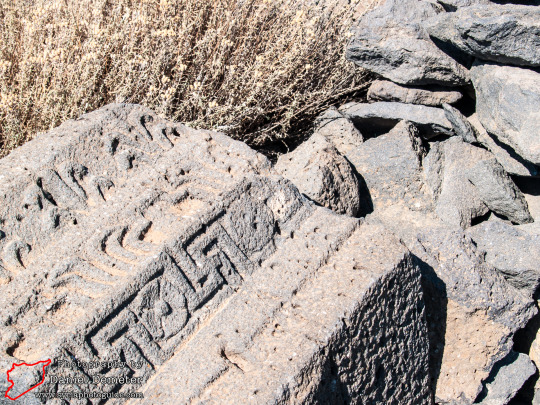
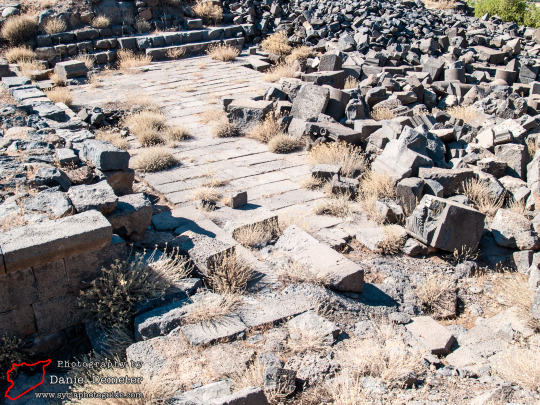
Sanctuary of Si (Seeia)
Hauran, Syria
50 BCE - 4th century CE ~
Si is now a deserted ruin. Ancient Seeia was not a town, or a village, like the majority of sites in the Hauran, but an ancient “high place”, or sacred precinct, adorned with temples, enclosed courts, splendid gateways, statues, and monumental inscriptions. On the plateau to the east of the precinct, and upon its slopes, there grew up a small village which exhibits no signs of Christian work, and is probably of the Roman period, or even of the same period as the temples. The architecture here is very simple, and is in a very much ruined condition, but it seems to illustrate all of the more important principles of construction that are characteristic of the Roman and Christian periods in the Hauran. From all that I observed, it is impossible to assign dates to any of these houses. In the valley to the north there are a few ruins of towers which I took to be coeval with the temples, and a great number of tombs, tower-like structures of the early period, and more elaborate constructions of both the Nabataean and the Roman periods.
From the valley, at a point about 300 m. east of the precinct, a paved road, of excellent construction in huge squared blocks, and about 7 m. wide, leads at an easy grade to the easternmost gate of the precinct. The general course of this road and the plan of the precinct and of the terraces about it may be seen on the map at the beginning of this Part. The road passes by the ruins of a bath and of a number of buildings of unknown purpose. At about half its length, it passes between the ruined piers of a fallen arched gateway. It terminates at an enormous pile of debris which represents the ruins of a triple-arched gateway of the Roman period. At this point the ascent is so steep that I cannot but believe that the outer gate, like those within, was approached by steps. Inside the entrance a paved courtyard, about 50 m. long and 19 m. wide, stretches to the westward. On the south of this court rises a retaining wall, 5 m. high, which masks the side of the knoll upon which a small temple stood. This temple was approached by a flight of steps set into the retaining wall and flanked by two niches. On the north is a terrace, 7 m. below the court, which is heaped high with debris in which are many interesting fragments denoting the presence of a buried building· of some kind. The eastern and western limits of this terrace are marked by walls of unusual thickness. This terrace, like all the others to be described, was artificially cut in the slope of the hillside. The western end of this first court is marked by the ruins of a gateway which I have called the Nabataean gate, because all of its details are in the characteristic Oriental style of Si. This structure is almost completely hidden in its own ruins, and the northern, or right hand, half of it is buried in the debris of a building of the Roman period with beautiful and characteristic details of the second century in Syria. The middle court, 50 cm. above the other, completely paved, and about 60 m. long by 23 m. wide, is not on axis with the outer court, but bends toward the north. It is flanked by terraces; one on the south about a metre higher than the pavement and one on the north some 7 m. below. The higher terrace was partly built up on a retaining wall, and is strewn with ruins. At its western end the temple of Dushara was discovered. The lower terrace is filled with masses of fallen building stones, broken statues, and fragmentary inscriptions, and is a promising place for future clearing out.
The end of the middle court is marked by a flight of steps 87 cm. high, and by a fine specimen of highly finished wall with an elaborate gateway in the middle. This is the east wall of the peristyle court in front of the great temple. It had preserved about 1.50 m. of its original height, gateway and all, when we uncovered it. Within the gateway, that is, between the jambs of the portal, are two more steps which raise the pavement of the inner court 1.25 m. above that of the middle court. This inner court with its peristyle I have termed the Theatron, in the light of an inscription in Nabataean which uses this Greek word, given in Nabataean letters, in such a way that it can be applied to nothing else. This court is also slightly off axis with the one which precedes it, it measures about 25 m. north and south and about 21m. east and west, inside the wall. The colonnade occupies three sides of a rectangle of 18 m. by 20 m. in front of the temple. Between the colonnade and the wall are a narrow passage and two steps, like the seats of a theatre, which may have suggested the name Theatron to the builders. The side walls of this enclosure are carried along the sides of the temple, at a distance of about 2.50 m. to enclose a space 12 m. deep in the rear of the temple; this space was also paved.
The magnificent temple wall of highly finished masonry which was disclosed by M. de Vogue and found to be intact to a height of 2 m., the two broad steps below it, the jambs of the portal, the bases of the columns and the bases of statues which he found all in situ, have been broken up to the very foundations and carried away by the stone- breakers since 1900. But these same plunderers, by carrying away much of the debris which filled the temple in 1861, and which M. de Vogue did not attempt to remove, have disclosed a part at least of the plan of the interior from which the rest may be restored, and have brought to light many new and important architectural fragments.
The style and character of the buildings, their present state of preservation, and the probable dates of their erection are to be discussed under the separate descriptions of the various buildings; but a few general remarks on these topics may not be out of place in these introductory paragraphs. The importance of the architectural remains at Si' lies in the fact that the buildings of the precinct here constitute the most important group of religious structures known to have been erected by that important branch of the Aramaean peoples known as the Nabataeans. M. de Vogue published a better preserved temple, of an entirely different plan, but having similar details, which he found at Suweda. A plan and a few fragments of one temple and scanty details of another found at Umm idj-DjimM have already appeared in these publications;1 two temples discovered in the Ledja by these expeditions are to be published in the Part which follows this one. These are the only monuments of Nabataean religious architecture known thus far, and the monuments at Si are the finest of their class. Here we have three temples, two of them of a plan hitherto unknown, the third prostyle tetrastyle. Beside the temples there are two fine gateways in the Nabataean style and one of the Roman period, and a bath that probably belongs to the later date. In the plain below there is a great variety of tomb structures, most of which are Nabataean.
Most of these buildings were designed in a style that borrows little or nothing from the contemporary or earlier Hellenistic architecture of Syria. As stone cutters and masons these builders were unmatched for skill; they placed the arch directly upon the column, being perhaps the first architects to do so. They employed a great variety of profiles in their mouldings, and often embellished them with naturalistic, or conventional, or geometrical, designs of carving; but few of the profiles or of the carved designs are to be found in the Classical architecture of Greece or of Rome. They used the bell, or inverted capital, as a base for columns, and adorned it as the Persians had done. They designed capitals of many varieties, one drawn roughly from the outlines of the Corinthian capital, but very differently treated in detail; another with a gigantic abacus like those found in Petra and in Hegra in Arabia and those recently discovered in Bosra;3 others still, of moulded types with little leaves below the angles of the abacus, resembling only in the faintest degree the capitals of the Classical orders. But stranger still it is to find that these Oriental artists introduced grotesques and naturalistic animal forms into their carving. Human forms with distorted bodies and grinning faces appear among the leafage of some of the capitals, while birds and locusts are found in the foliage of the grape-vines. The grape-vine was the favorite subject for the broader bands of architectural ornament, and so great is the variety of treatment in leaves and fruit that it may be possible to trace a chronological sequence by means of it. But other vines were also popular; for we find the ivy and the convolvulus, and even the thistle, treated as a running ornament. The well-known acanthus, so common in Classical designs, if used at all, does not appear as a familiar plant naturalistically treated, like so many other vegetable forms, but as a conventional ornament with little resemblance either to the plant itself, or to the conventionalized form in which the Greeks and Romans used it. The Corinthian form of capital undoubtedly had long been known in Syria, in the Hellenistic architecture of the three centuries before Christ. We have specimens of it, dating from the second century b. c., in the building erected by John Hyrkanos at Arak il-Emir.1 In this building there are two varieties, one large and having a double row of plain water-leaves, the other small, with a single row of true acanthus. The Nabataean capitals at Si', which follow the Corinthian model to a certain extent, have but one row of leaves, and that a tall one, and the leaves resemble the acanthus more perhaps than those of any other plant.
There are three perfectly distinct periods of building represented in the ruins at Sf, two of which are definitely dated by inscriptions, the third, by unmistakable peculiarities of style. The first is a Nabataean period dated by an inscription which tells us that the temple was begun in the third quarter of the first century before Christ. I believe that some of the fragments here are somewhat older than the earliest date named in the inscription — 33 b. c. - or, in other words, that the inscription does not record the actual foundation of the building. The second period is also devoid of Hellenistic influence, and is dateable within fifty years by means of inscriptions of Agrippa II, i. e. from 50 to circ. 100 a. d. The third period is represented by fragments of architectural details which were certainly executed in the second century after Christ. The three periods would then be roughly speaking,
1st. from 50 b. c. to 50 A. d. ;
2nd. from 50 a. d. to 106 a. d., when Arabia became a Roman province under Trajan;
3rd. from 106 a. d. to the close of the reign of Caracalla in 217 a. d., which marks the end of this particular style in Syria.
There are no evidences of building activity in Si in the later style of the Roman period, or in Christian times; in fact, as we shall see later, the temples appear to have been the particular mark of early Christian violence, perhaps, as M. de Vogue suggests, owing to the activities of Herod and of the presence of inscriptions of that prince in the precinct. It is probable that the place has been deserted since the beginning of the fourth century.
Sources: 1 ,2 ,3 (colorized using playback)
#art#Architecture#travel#history#roman#syria#hauran#si#seeia#sanctuary#city#site#1 bce#1 ce#2 ce#3 ce#4 ce
82 notes
·
View notes